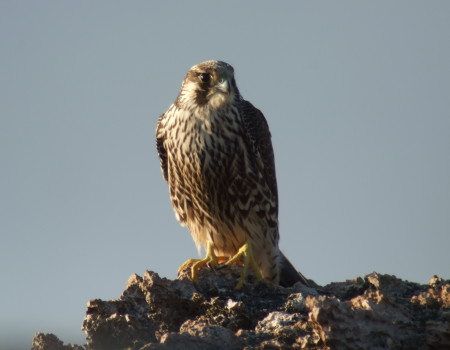
How to spot it:
The Peregrine Falcon is a powerful and fast-flying large crow-size falcon. It’s dark grey above and cream-colored with dark brown bars below. Pointed wings, long, narrow tail and rapid pigeon like flight identify it on the wing. When perched, its mask-like head pattern is distinctive. Immatures are brown above, cream-coloured with heavy brown streaks below.
Where to find it:
An uncommon-to-rare migratory bird, it can be found throughout the West Indies primarily from October to April in coastal areas, offshore cays and rocks, woodlands, forests and cities. One breeding record exists for Cuba and another for Dominica. Peregrines are among the most widespread bird species in the world, found on all continents except Antarctica and on many oceanic islands.
What does it eat?
Peregrine Falcon eat mostly birds, especially flocking doves, waterfowl, songbirds, waders and pigeons. They take birds on the wing, usually while flying low to the ground and surprising their prey from behind as they take off. Peregrines also dive on prey from high above, striking with their feet. They are said to be the fastest animal in the world, reaching speeds over 320 km/h (200 mph) or more during hunting dives.
Global status:
Peregrine populations crashed in 1950-1970 due to the use of pesticides, especially DDT, and it was declared an Endangered Species. Following the ban on DDT in the early 1970s, protection of nesting places, and releases of captive-bred birds to the wild, the species recovered enough to be removed from the Endangered Species List in 1999 – a conservation success story!
